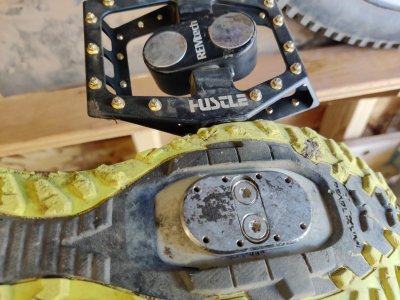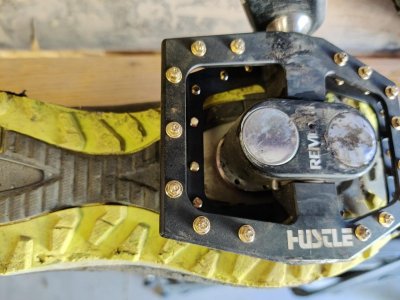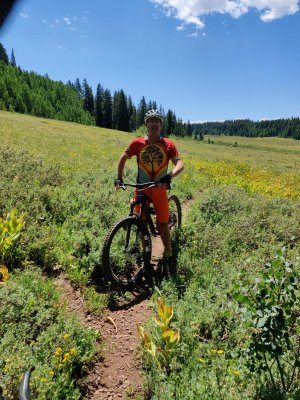Anyone who has been riding for a while on the east coast knows what I'm talking about. A typical popular trail - and therefore the way people approach riding on that trail - has changed a LOT in the last decade. And along with that change has come a change in attitudes and practices around pedals.
Twenty years ago when I started MTB riding (at age 40), cross country riding was basically what there was here. It was what everyone did, and it was truly cross country. Meaning, you rode from point A to point B and back. Maybe it was a big loop, sure, but what you were NOT doing was sessioning a short section of trail with a bunch of fun man-made features, trying to get more air, more propulsion out of that berm, or whatever. No. What you were doing was riding the rough trails of the time, always trying to extend the ride without having to double-back or repeat sections.
And what were those trails like? They were rocky, rooty, wet, purpose-built singletrack. At least if you were on a
good trail. The
not-good trails were rocky, rooty, wet snowmobile trails or powerline corridors rife with impassable swamps and beaver dams. Riding those trails was the cycling equivalent of Humphrey Bogart wading through the Congolese marshes in
The African Queen, emerging covered with leeches. A great ride was all about keeping on keeping on, the longer and more technical the climbs, the better. It was about endurance and fortitude. Descents were sometimes a hoot, often challenging, and almost never contained any meaningful airs or manmade features. At most there would be a 2x12 that some kid had propped up on a stump, here today, gone tomorrow, given wind, water, and wear from riding. Same with a crude stile over a fieldstone wall that someone built from boulders, or out of quickly rotting logs to help riders over a large downed tree.
Trail building and riding were battles against time: The first year, the trail was soft and slow with evergreen duff, but promising. The next year and the year after that, heaven. Years four and five were still good, but the roots were emerging and the the flow was harder to find. After ten years, forget it. Build a new trail somewhere else, because this one was now nothing but a latticework of roots and rocks.
Ten or twelve years ago a pair of trail studs from IMBA in Colorado came east to teach us how to build
durable trails properly, to get out of this cycle. They had a bunch of local volunteers to help. After a whole week they had only built a half mile of trail. Their shtick was that you had to get down to the "mineral layer" by cutting through all the roots. They were clueless about our geology and ecosystem. Finally they had to admit, "You guys really have an awful lot of trees here." It just wasn't feasible.
Then, sometime around six or eight years ago, something changed. I'm not actually sure what it was. Money? Know-how? Willpower? Buy-in of landowners? Dunno. But suddenly machine built trails were sprouting up here and there. And they were built partly by ADDING material OVER the roots. Ah. So THAT's the secret.
The new trails had big berms and they had tabletops and opportunities for serious air with an actual landing zone free of trees and ledges. In short, they were smooth, and they were fun, and they were meant primarily to be ridden in the downhill direction. Often there was an accompanying "climbing trail" associated, laid out with switchbacks that made the climb just an easy slog, not the semi-terrifying technically challenging scramble, requiring gumption and skill, that always used to be the toll you had to pay for any significant free ride. (The gumption and skill was now reserved for the "features" on the descents.)
Even riders' clothing has changed. 20 years ago the local MTB crowd was indistinguishable from their roadie buddies except for the mud on their clothes and the lugs on the bottoms of their shoes.
Fast-forward to 2022 and everyone is riding the new "flow" trails. Their kits scream "mountain biker." Because hours toiling literally in the saddle are not a thing anymore. And they have flat pedals. Because you don't have to be efficient if you're sessioning, with the associated numerous and prolonged tea parties that we always used to poo-poo. But you DO need the flexibility of instant-off, and the stability of a big platform.
So it all makes sense to me. I just don't fit in, is all. For me, riding is about pedaling, not about jumping. It's the skier / snowboarder thing- making turns vs. finding "hits." This is not a value judgment; it's just what it is.
@aveski ... sanity check?



